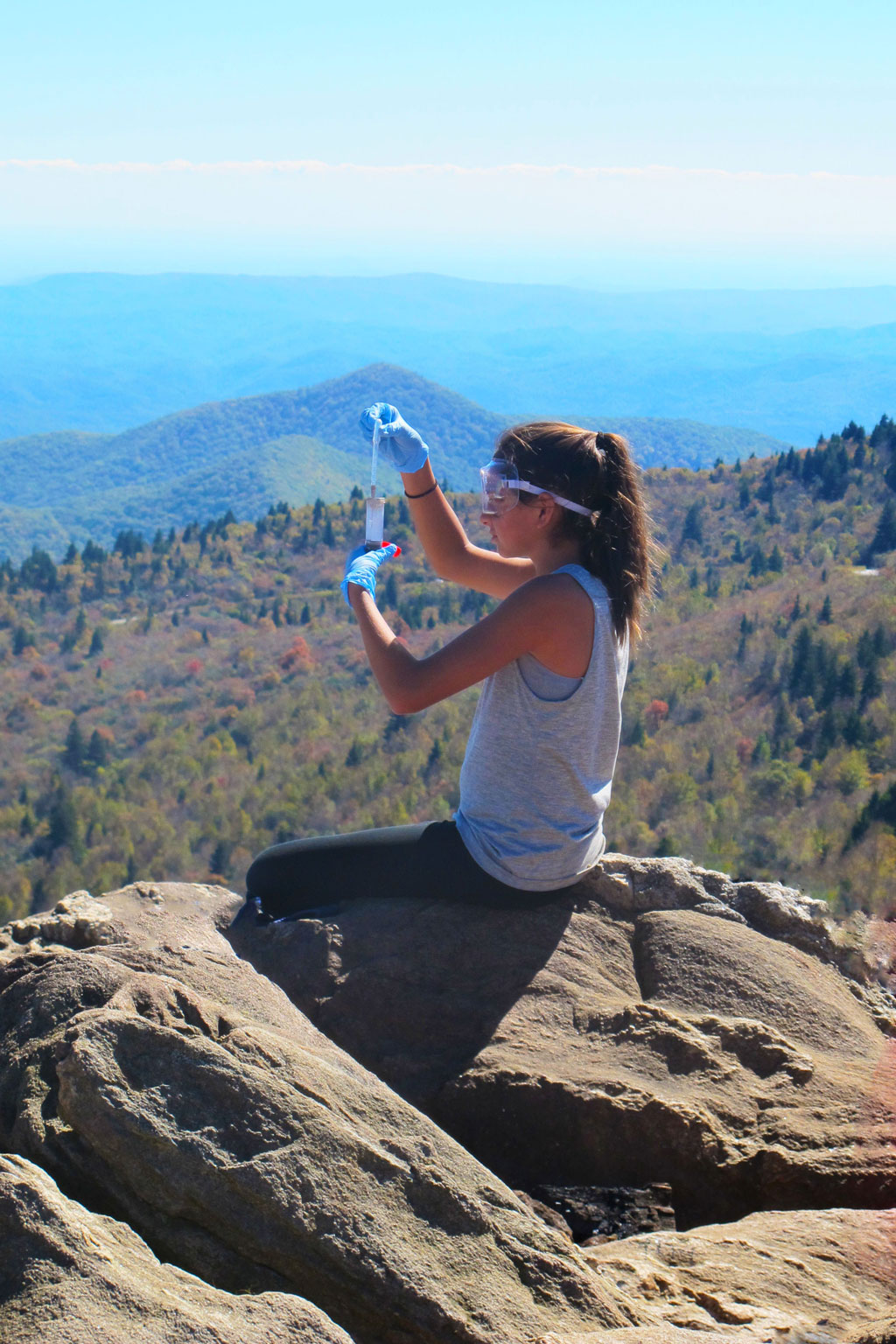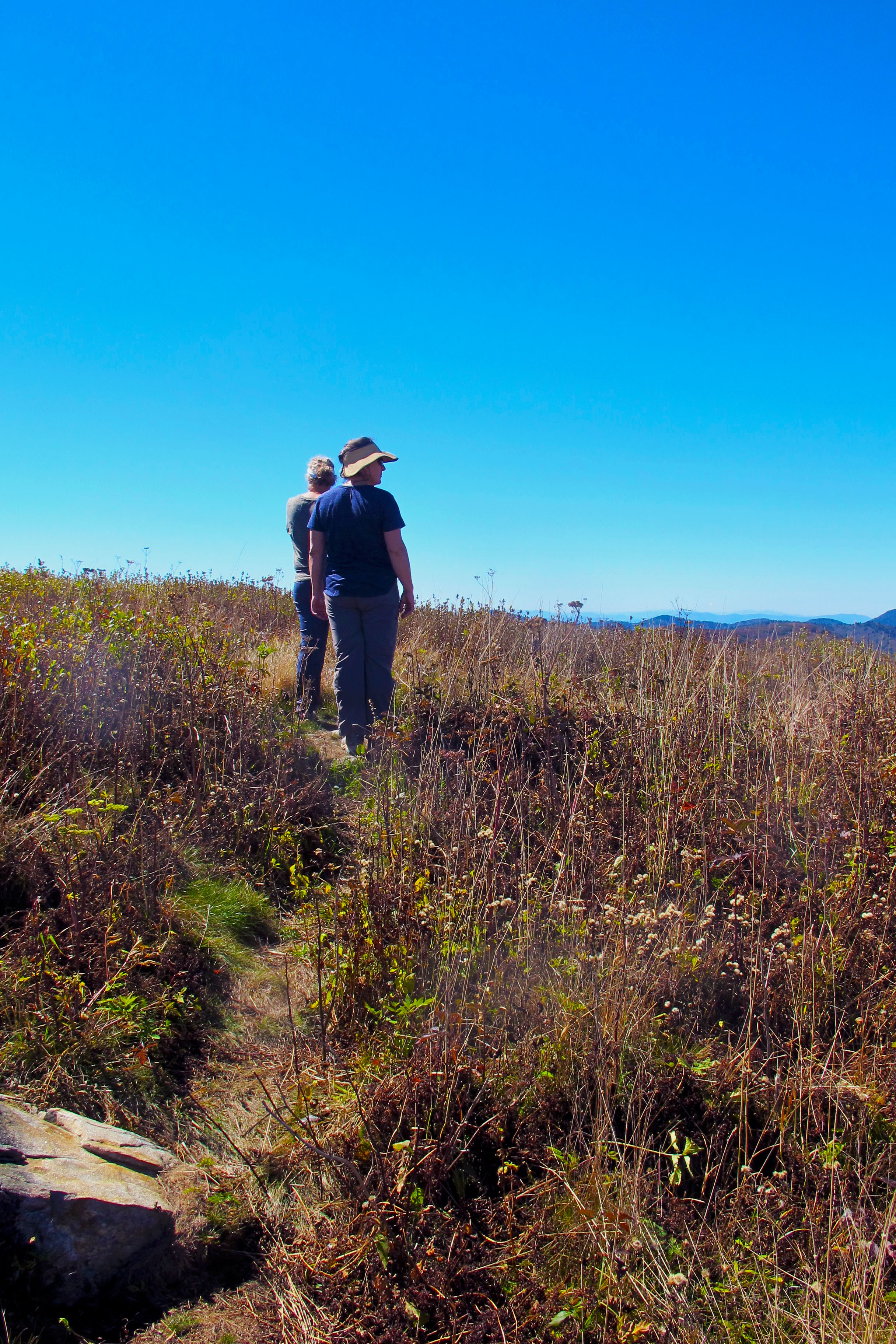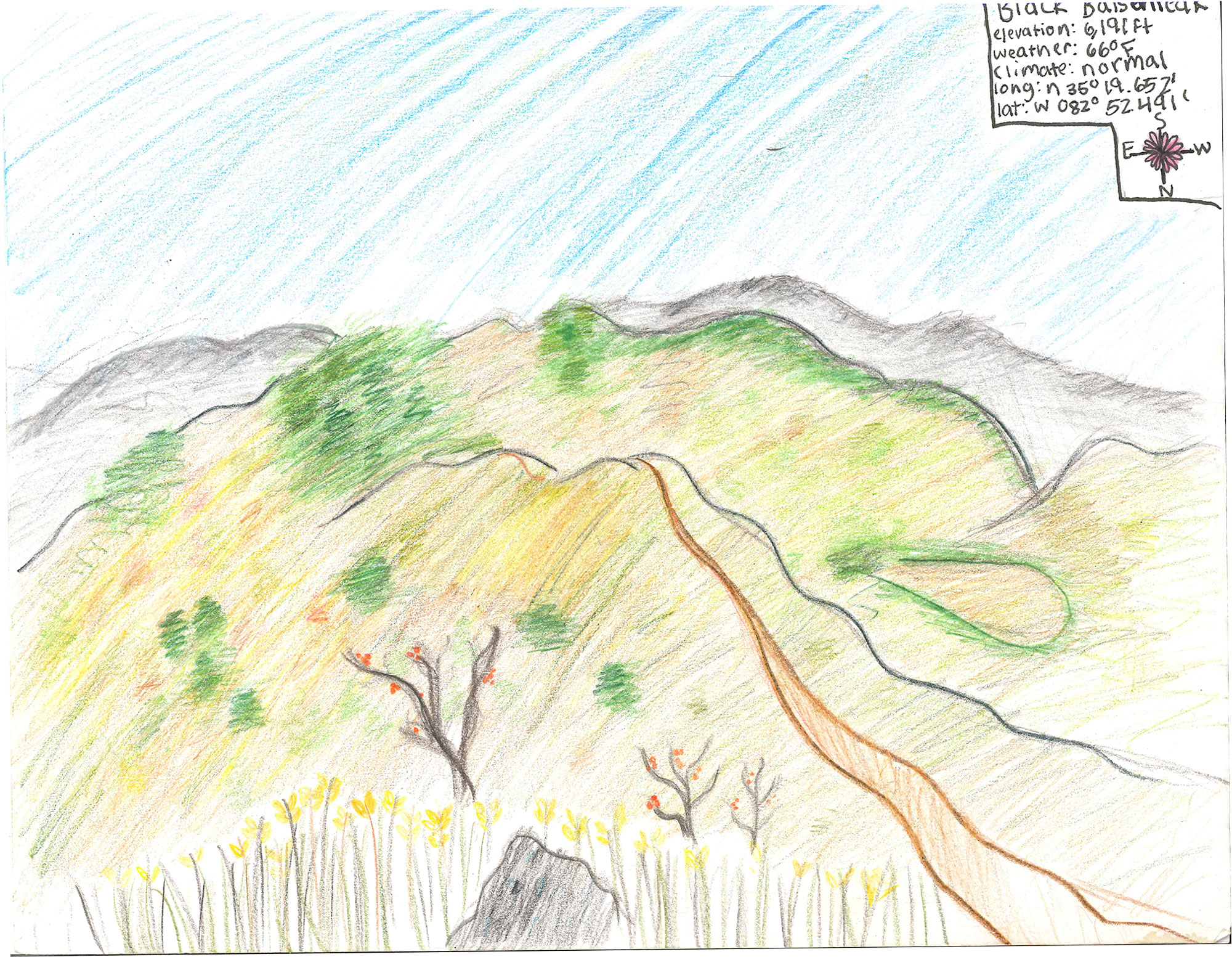BLACK BALSAM KNOB
Black Balsam was a chance for all the scientific groups to dig deeper than the surface and look beyond what we could see. Black Balsam has a rich history, and the teachers kept it a mystery. We hiked up the mountain and stopped to enjoy the amazing view. Shortly after we got straight to work. We unpacked all of our gear and began the site study. Black Balsam Knobs landscape is very different than other mountains. In the 1920s a train crashed, and the oil that was being transported spilled. The fire was so hot it even burned the soil, so now only grass can grow. Even though it’s not very green, it’s still a beautiful sight that is an attraction to the Appalachian mountains.


Discoveries:
Zoology Discoveries:
The enviorment was not very rich in animal life but it had a lot of insects. On the actual top of of the mountain there were no trees but a little bit down there were some. The reason for both of those is the enviorment was very dry and it didnt seem to have the nutrients to sustain life. There were a couple of birds that we saw, crows and bluebirds. Most of this is probaly because there was no running water.
Botany Discoveries:
Black Balsam Knob had very weak soil that was deprived of nutrients. It was composed of dry silt and sand, stuff that erodes very easily. There was very little biodiversity and all of the plants were very dry. There were only trees on the side of the mountain. One side had blueberries, this was the area with the richer soil.
Human Impact Discoveries:
Black Balsam, while in the wilderness
There were dirt paths for people to walk on< and other
A lot of camp sites, and left behind trash
The rocks there were not natural, and cut by humans
2 gravestones
Further in the mountain, there were deep trenches right next to a path
Species of fern that was dying (the fern species was dying out because other plants were taking over)
Metal coil coming out of the ground (rusty)
The federal government dropped
Random logs in certain areas (stairs)
Why did the people doing the photoshoot choose black balsam?
Chemistry Discoveries:
The soil had really low phosphorus
Medium traffic, low traffic, high traffic
There were low nitrates and low phosphates and medium to high potassium
A train spilled oil and burned the soil that the soil is useless
Geology Discoveries:
The odd composition were essentially migmatite when it erodes from the water it creates a sparkly dust. Overall things just seemed to be very odd.
Meteorology Discoveries:
Rain goes down from the mountain and goes into river. It doesn’t rain a lot in this area. The site was very dry.
MAPS
Conclusion:
The environment that I saw was dry, dead, and uninhabitable for most animals. There was no aquatic life because there were no marine habitats. The plants grew upright and low to the ground, most likely because the soil was so dry that it couldn’t support big plants like trees. Another factor of why this might be is that I didn’t see any pollinators (bees, butterflies, etc), so they can’t come and pollinate certain plants. This results in hardly any diversity between the plants. The wind and rain erode the rocks at the peak of the mountain and makes the soil rocky, sandy and innutritious. The reason this place is so dry is that a train that was carrying oil fuel crashed and made a massive explosion on the mountain. The explosion created a fire so hot, that it literally burned the soil. This is why the environment is how the way it is.

